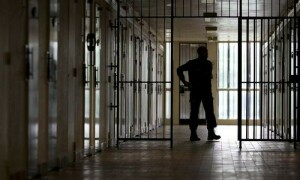LAHORE: The snag at the Guddu power station, the country’s largest, which triggered one of the worst nationwide power breakdowns late last Saturday night, has also brought focus back on the need for ‘overhauling the collapsing power sector and improving governance for reliable electricity supply to the people’.
Many blame poor maintenance of the power system leading to the failure of the safeguards as a major cause for the shutdown. “The power sector is being managed by those who don’t appreciate its technicalities nor are trained to manage it,” Fiaz Ahmed Chaudhry, former managing director of the National Transmission and Despatch Company (NTDC), told Dawn on Monday. “Only a naïve person would expect them to adequately maintain the system; they aren’t trained for taking care of the technical niceties of the system.”
A senior official of Nepra, the power sector regulator, shares his views. “The countrywide electricity blackout experienced by the people last weekend signifies total breakdown of governance in the power sector,” he said on condition of anonymity. “With the professional, trained people sidelined, the entire system is being run on a day-to-day basis by the powerful bureaucrats who have little understanding of the sector.”
Fiaz Chaudhry pointed out that there are plenty of factors — from human error to equipment failure to environmental effects — that might have pushed generation plants to automatically shut down last weekend. “You cannot rule out such events in a transmission system that was designed for normal weather conditions decades ago and the size of which has more than doubled during the last few years. Who can guarantee that a 40-year old or a 70-year old line would not trip in foggy conditions? The system was not devised for present environmental conditions.”
Pakistan has in the past experienced numerous partial or complete power breakdowns, the frequency of which has increased in the recent years because of problems with the outdated transmission and distribution system. In January 2019, the problem at Guddu had led to a major power failure across Sindh and Balochistan. In May 2018, a widespread breakdown in NTDC’s system caused power shutdown in Punjab and Khyber Pakhtunkhwa. In 2015, Baloch separatists attacked a transmission line, plunging almost 80 per cent of the country into darkness. These are only a few examples.
About 48 hours after the breakdown, at least 20 per cent consumers were still grappling with the complete suspension of power supply and others coping with periodic blackouts in many cities, including Lahore. “Almost 80 per cent generation has come back online,” Mohammad Ayub, general manager at the National Power Control Centre (NPCC), which oversees the flow of electricity from plants into the system, told Dawn on Monday night, adding that the nuclear and coal power plants took longer to energize. “By Tuesday morning all plants will be energized.”
As the government struggles to fully restore electricity supply, it has suspended seven Guddu plant officials, from additional station manager to junior engineer to attendants, and formed a committee to investigate the actual cause of the problem at the plant. The committee will also give new proposals to prevent occurrence of such incidents in future.
In the meanwhile, a statement by Minister for Energy Omar Ayub Khan on Sunday, accusing the previous governments, especially the last Pakistan Muslim League-Nawaz administration, of not paying attention to upgrade of the antiquated power distribution network and focusing only on generation, has spawned a war of words between the government and the opposition.
According to the minister, the country’s power generation capacity had increased to 36,000 megawatts under the PML-N rule while the system is still capable of distributing only 26,000 megawatts. “There are issues with the distribution system since it hasn’t been upgraded,” he told a press conference and then went on to claim that the present government has invested Rs49 billion in the transmission system and installed anti-fog insulators over the last two years.
However, experts do not agree with his contention that the transmission system is the main cause of the nationwide power breakdown. “It is misleading to suggest that lack of investment in transmission is responsible for the countrywide power breakdown. In summers, when the electricity demand is at its peak, the same system can transmit and distribute over 24,000 megawatts of electricity without any problem. Why does it always break down in winters when the demand is less than half of that in summers? Why all major breakdowns have occurred only during winters?” Fiaz Chaudhry asked.
Under the ‘merit order’, he explained, the authorities give priority to generation from more efficient plants that produce cheaper electricity and which are mostly located in the southern parts of the country. With 75 per cent demand coming from Punjab and Khyber Pakhtunkhwa and cheaper power flowing in from south, he added, the fault in the Guddu power plant split the southern and northern distribution networks, creating surplus in southern regions and causing deficit in northern areas. That ignited the system safeguards, causing all power plants to shut down automatically.
Mohammad Ayub agrees. “When 2,600-2,800 megawatts of electricity suddenly slips out of the system, it has to shut down to prevent major losses to the plants.”
Fiaz Chaudhry is of the view that the government should devise a separate merit order for winters to split generation and distribution networks between southern and northern regions to contain any cascading effect spreading across the country. “In such cases, if a plant in southern provinces develops a fault because of any reason, it will not affect the northern regions and vice versa. Maintenance of system security is more important than cutting the cost of electricity supply. The government needs to understand that the economic cost of un-served energy is 12 times of energy supply.”
Published in Dawn, January 12th, 2021













































